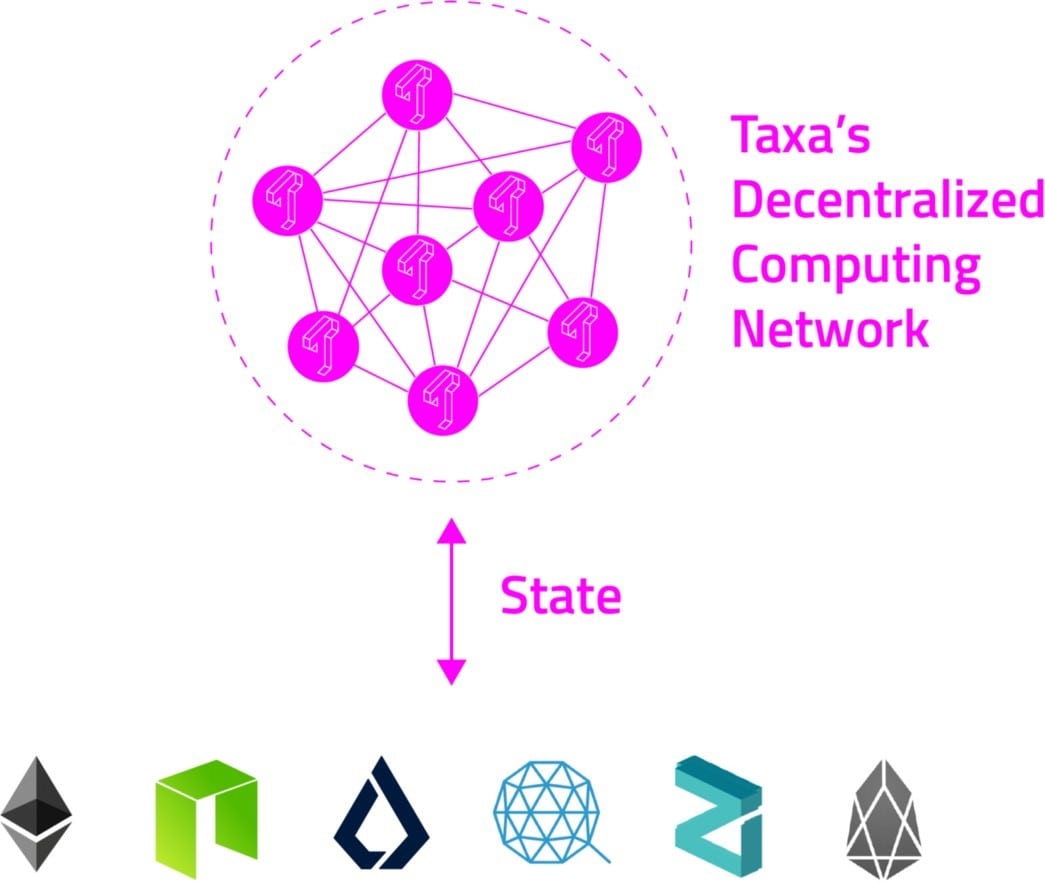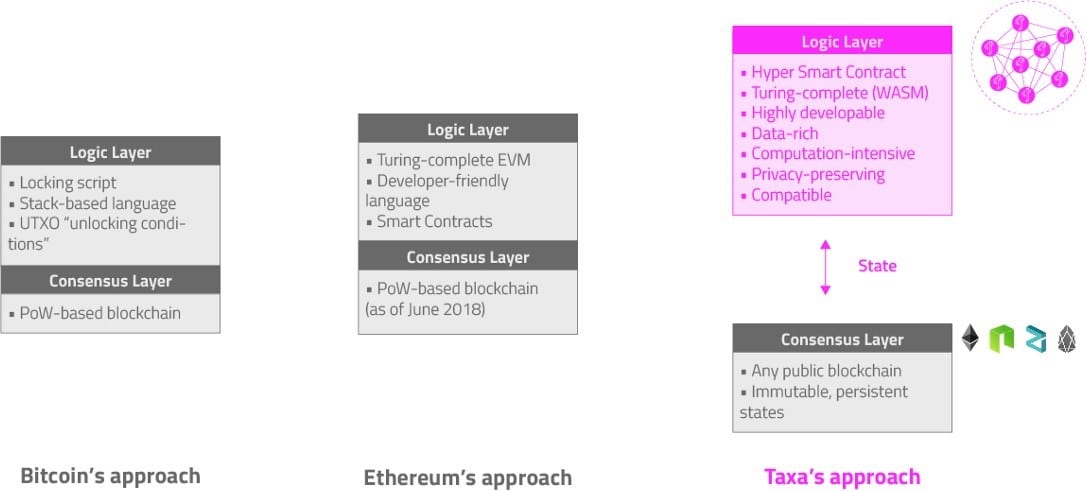In 2014, Ethereum was announced. 4 years later, the hype about crypto economy has reached new peaks.
Is blockchain ready for real-world adoption?
Not yet…
According to CoinDesk, as of June 2018, the Top 5 Ethereum DApps by Daily Active Users are: 1. Idex: 6,479; 2. ForkDelta: 2,221; 3. Bancor: 560; 4. CryptoKitties: 408; 5. LocalEthereum: 236.
Scalability is certainly a major roadblock for blockchain’s mass adoption. We’re happy to see projects arise to resolve blockchain’s scalability bottleneck, with approaches such as DPoS, sharding and ofl- chain state channels.
This interest in TPS leads into our second question:
Is increasing TPS all we need to bring more usages for blockchains?
Even if we reach 1 million TPS, the individual smart contracts are still very simple programs. Factors that limit the usage and value of smart contracts include:
- Time resource: As just one example, Ethereum processes 2-digit transactions per second as of June 2018. Because of that, the execution time for each transaction and its associated smart contract is Smart contracts on Ethereum lack the time capacity to execute complex business logics or intensive computations.
- Space resource: Due to the current design of major blockchains, all the transaction information, including smart contract input, must be packed into Say, the entire Ethereum blockchain is only ~450 GB (in less than 3 years), and each block size is only 20–30 KB. There’s no su±cient space resource for heavy data.
- Privacy protection: Due to the consensus mechanism, each node has access to each byte of the code and data of a smart contract executed on Due to the lack of data privacy, one can hardly build significant, real-world applications on blockchain.
Yet, increased TPS won’t fully resolve the aforementioned limitations. It is certainly necessary to improve blockchain’s horizontal performance in terms of TPS. On the other hand, to make blockchain massively usable, there’s much more to be done with its vertical performance—the ability of handling intensive computation and heavy data, while ensuring a reasonable level of privacy.
Introducing: Taxa
Taxa is a Layer 2 infrastructure that brings performance, privacy and usability to every blockchain and their DApps.
Hyper Smart Contracts
Leveraging the state-of-the-art hardware-based trusted computing technology and a PBFT-derived consensus mechanism, Taxa aims at becoming the universal logic layer that enables high-performance, privacy-preserving, and highly-developable Hyper Smart Contracts for all.

Layered Design
At high level, Taxa is introducing a layered design to move on-chain logic processing to off-chain.

In this layered design, Taxa executes stateless, high-performance, privacy-preserving smart contracts, while interacting with the consensus layer of public blockchains to store the immutable, persistent states.
Taxa brings the core functionalities to every blockchain and DApp:
- Performance: Computing capabilities ft. low overhead at an accelerated speed allow applications to perform complex business logics.
- Privacy: Hardware level isolation with secure I/O channels guarantees the sensitive data’s security in storage, transmission and execution, concealing DApps’ private info from the public and the
- Reliability: A fault-tolerant consensus model is married with trusted hardware to guarantee the integrity, confidentiality and
- Developability: Rich SDK support, and a general-purpose, developer-friendly interpreter environment for flexible industrial use.
With Taxa, developers are able to unlock whole new use cases in analytics, fintech, advertising, AI, identity, healthcare, legal, and more!
Just imagine!
Founders
TF Guo became a white hat at the age of 16, and has been a blockchain advocate since 2014. He is an expert in security and cryptography. He was a technical advisor of Amino Capital and FBG Capital, and co- created Silicon Valley’s notable entrepreneur community, Shinect. TF received M.Sc. in Computer Science from GWU.
Esther Hu is a mathematical modeler who enjoys solving big, real-world problems. She led a wide range of interdisciplinary projects on automated trading strategies, quant risk modeling, financial derivatives, psychological statistics, health economics at Thomson
Reuters, Stanford University, and Peking University. Esther received M.Sc. in Statistics and M.Sc. in Financial Mathematics from Stanford University.
Follow us:
In this blog, we shared Taxa’s vision to empower significant, real-world adoption of blockchain by bringing the missed vertical performance, privacy protection, and high developability to every blockchain and their DApps.
In next blog, we will give you a closer look at Taxa’s technical stack. Stay tuned.
Follow us to first receive the updates:
Website: https://taxa.network Telegram: https://t.me/taxanetwork Twitter: https://twitter.com/taxanetwork
Facebook: https://www.facebook.com/taxanetwork/ AngelList: https://angel.co/taxanetwork
Medium: https://medium.com/@taxanetwork
Photo credit: CryptoKitties Disclaimer: The opinions expressed in this article do not represent the views of NewsBTC or any of its team members. NewsBTC is neither responsible nor liable for the accuracy of any of the information supplied in Sponsored Stories/Press Releases such as this one.























